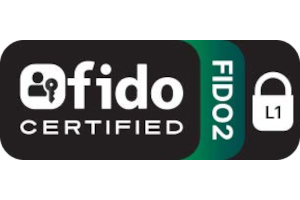Nitrokey 3A Mini erhält offizielle FIDO2-Zertifzierung

Wir freuen uns mitzuteilen, dass unser Nitrokey 3A Mini die offizielle FIDO-Zertifizierung erhalten hat. Diese Zertifizierung der Fast Identity Online (FIDO) Alliance bestätigt, dass unsere Authentifizierungstechnologie den erwarteten Sicherheitsstandards und Kompatibilität entspricht und somit eine robuste Lösung gegen Phishing-Angriffe und andere Cyberbedrohungen darstellt. Dies unterstreicht unser Engagement, sichere und vertrauenswürdige Produkte anzubieten, die den Anforderungen sowohl von Privatpersonen als auch von Unternehmen gerecht werden.
"Die FIDO-Zertifizierung ist ein bedeutender Erfolg für uns und unsere Kunden. Sie bestätigt, dass unsere Lösungen nicht nur sicher sondern auch standardkonform und kompatibel sind", sagte Jan Suhr, CEO und Gründer von Nitrokey. "In einer Zeit, in der Supply Chain Angriffe immer raffinierter werden, ist es entscheidend, dass Unternehmen und Privatpersonen Zugang zu qualitativen IT Sicherheitsprodukten als Open Source haben."
Die FIDO-Allianz ist eine weltweite Initiative, die sich der Entwicklung von offenen, lizenzfreien Standards für sichere Authentifizierung widmet (auch "Passkeys"). Die Zertifizierung garantiert, dass unsere Produkte interoperabel und mit einer Vielzahl von Plattformen kompatibel sind, darunter Windows, macOS, Linux, Android und iOS.
Mit dieser Auszeichnung festigen wir unsere Position als führender Anbieter von Open Source Sicherheitslösungen aus Deutschland. Kunden und Partner können sich darauf verlassen, dass sie mit Nitrokey-Produkten eine erstklassige, geprüfte und zertifizierte Technologie erhalten, die den steigenden Sicherheitsanforderungen im digitalen Zeitalter gerecht wird.
Die erhaltene Zertifizierung auf Level 1 umfasst FIDO U2F und das moderne FIDO2. Ab dem nächsten Jahr streben wir die Zertifzierung weiterer unserer Nitrokey Modelle an.
Comments
Add new comment